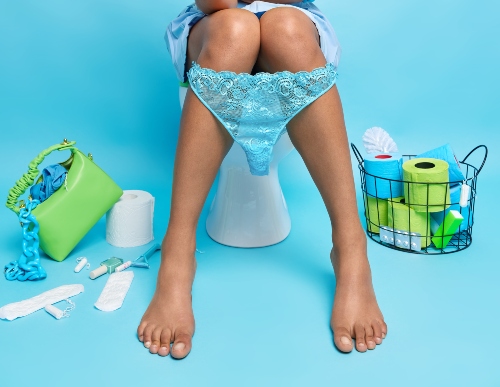The loo, 6-9, the John, the lev, or however you wish to call it, there are endless ways to describe one of the most important fixtures in any home, office or public space. According to several health reports, a toilet seat carries more than 50 bacteria. Despite many having been taught how to potty, many of us have shown an impressive inability to handle our toilet business adequately or be considerate to others. Proper bathroom etiquette is a part of common courtesy and by following some simple rules, one can avoid contracting any infections while being kind to others.
GOOD TOILET MANNERS
While some prefer the seat down, many still believe leaving the seat up shows you are confident that you left it clean. Some men struggle with aiming. Think of it as a game, aim and shoot. When all else fails, clean the seat after use. Wipe the seat down with some toilet paper if there are some drops.
Having the phone with you in the toilet seems to be standard procedure, especially when doing the number two. But by all means, leave the phone conversations until after you're done with your business.
It is still puzzling how many people leave the restroom without washing their hands. This is the bare minimum one can do for their health. Disinfect the toilet seat. A mild hand soap and water can be used for this. Alternatively, anti-bacterial hand soap, dish soap or anti-bacterial wipes are also acceptable.
INFECTIONS TO AVOID
Although the toilet seat is not a common vehicle for transmitting infections to humans, there are still plenty of bugs lying around in public restrooms, including both familiar and unfamiliar suspects like streptococcus, staphylococcus, shigella bacteria, hepatitis A virus, the common cold virus, and various STIs. Many other disease-causing organisms can only survive for a short time on the surface of the seat. Here are some infections one needs to be careful of:
Urinary tract infection:
The urinary system includes the kidneys, bladder, and urethra. A urinary tract infection (UTI) is an infection that can be found in any part of the urinary system. Most infections involve the lower urinary tract, the bladder and the urethra. Women are at greater risk of developing a UTI than men.
Sexually Transmitted Infections (STIs):
STIs can be caused by viruses, bacteria and parasites. These can't live or thrive on hard surfaces, including toilet seats. Bacterial STIs can't survive outside of your body's mucous membranes. For this reason, it's nearly impossible to contract an STI from a toilet seat. Some viral and parasitic STIs can live outside of your body for a limited period and they may be transmitted from contact with a toilet seat. A damp toilet seat can spread trichomoniasis. Hepatitis B might enter your body from a toilet seat through freshly deposited blood or semen.
Candidiasis:
Candidiasis is a fungal infection caused by a yeast called Candida. It can cause infections if it grows out of control or if it enters deep into the body. It can also cause infections in the bloodstream or internal organs like the kidney, heart, or brain. The condition can be transmissible under certain circumstances. An overgrowth of yeast in the vagina, mostly Candida albicans, can cause candidiasis in women. You are at a greater risk of this infection if you are using an unclean toilet. Avoid wiping from back to front as the rectal area has more yeast and wiping this way can spread the pathogens.
Prostatitis:
Prostatitis is a disorder of the prostate gland usually associated with inflammation. It is a medical emergency condition where the prostate swells due to inflammation, which is caused by bacterial infection. It is characterised by pain in the genitals, and groin region and is accompanied by flu-like symptoms. There are generally four types of prostatitis: bacterial prostatitis, a bacterial infection of the prostate usually with sudden, severe symptoms, Chronic bacterial prostatitis, Chronic prostatitis/chronic pelvic pain syndrome, and Asymptomatic inflammatory prostatitis, signs of an inflamed prostate with no symptoms.







